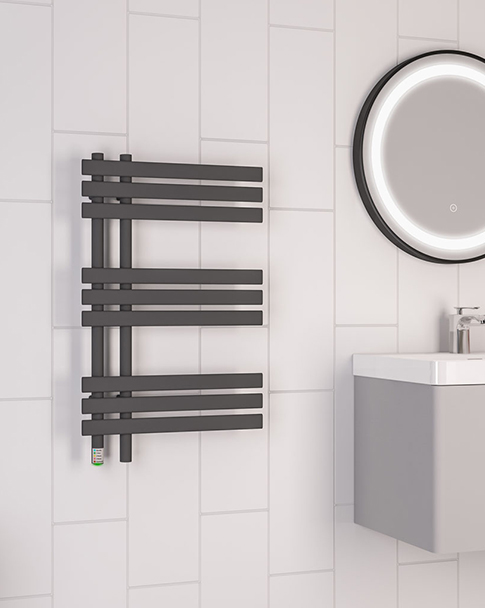
Beyond the Steel: Why the Heating Element is the Heart of Your Towel Rail
Introduction:
When distributors evaluate towel rails, they focus on finish, design, and price. But the true differentiator between a mediocre product and a premium one lies hidden inside the tube: the heating element. This critical component dictates performance, safety, and longevity. Understanding the engineering behind it is your key to sourcing superior products.
The Three Types of Heating Element Technology:
1. Mineral Insulated (MgO) Cable Elements: The Premium Standard
How it Works: A resistance wire is surrounded by a tightly compacted mineral insulation (Magnesium Oxide), all housed in a metal sheath (usually copper or stainless steel).
Pros:
Superior Heat Transfer: MgO is an excellent thermal conductor, ensuring efficient, even heat distribution with no cold spots.
Robust & Durable: Highly resistant to vibration and physical damage. The element itself is often a single, continuous piece, reducing failure points.
Long Lifespan: The mineral insulation does not degrade over time, offering a stable performance for decades.
Ideal For: High-end rails where performance, silence, and longevity are paramount.
2. Silicone Rubber Pad Elements: The Flexible Solution
How it Works: A thin, flexible pad containing a etched foil element is bonded to the inside of the rail.
Pros:
Cost-Effective: Cheaper to manufacture and install.
Flexible Design: Can be adapted to more complex, non-linear rail designs.
Cons:
Potential for Hot/Cold Spots: Heat distribution may be less even compared to MgO.
Longevity Concerns: The adhesive can degrade over many years under constant heat cycles, potentially leading to delamination and rattling inside the tube.
Ideal For: Budget-conscious, mass-market models.
3. Low-Watt Density Finned Elements: The Industrial Workhorse
How it Works: A resistive wire wound around a ceramic core, with aluminium fins to dissipate the heat. Often used in industrial heaters.
Pros:
Powerful Heating: Can achieve high temperatures quickly.
Cons:
Uneven Heat: Can create noticeable hot spots directly opposite the fins.
Potential for Noise: May produce faint "ticking" sounds as the metal expands and contracts.
Ideal For: Less common in modern domestic towel rails; found in some older or heavy-duty commercial models.
The Sourcing Checklist: Questions to Ask Your Manufacturer:
"What type of heating element do you use?" (The answer should be specific)
"Is the element made in-house or sourced from a third party? Can you name the supplier?" (Reputable brands use elements from specialists like Backer or Tutco)
"What is your failure rate for the element after 1,000 hours of testing?" (A good rate is well below 1%)
"How do you ensure the element is in perfect contact with the tube wall for even heat transfer?" (This speaks to their assembly quality)
Conclusion:
Don't let the element be an afterthought. A high-quality mineral-insulated element is a sign of a manufacturer that invests in engineering excellence. It’s the most important factor in ensuring a silent, efficient, and reliable product that will build your brand's reputation for quality.